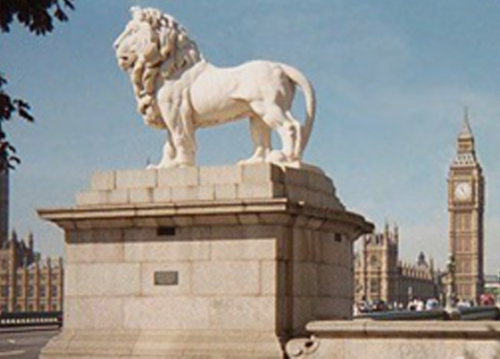“Dr Minor’s Lambeth, 1872”
The London Borough of Lambeth today would be unrecognisable to Dr William Chester Minor. He went to live there just after Christmas 1871. At that time Lambeth wasn’t even part of London, but belonged to the county of Surrey, so was outside metropolitan control. That was part of its attraction for many of residents. “Lambeth” then was a synonym for lowlifes, the demi-monde, outlaws and those who mixed with them, preyed on them and were, in turn, preyed upon by them.
Lambeth was a byword for insalubrious, insanitary, and dangerous conditions, so why would an outwardly respectable, affluent, and cultured man like Dr Minor, a retired US Army surgeon and painter of some talent, choose to live there? Its loucheness and anonymity appealed to him and, as he later admitted to the police, living there was a way to get easy access to easy women. His distorted and hyper-sexualised image of women and his guilt-ridden and tortured relationships with them are a central theme in Defining Dr Minor.
Much of the land along and inland from the Thames in Lambeth was owned by the Archbishops of Canterbury (their riverside residence Lambeth Palace was nearby). The church authorities collected rents from – but did little to improve – the area’s warren of overcrowded lodging houses, brothels, drinking dens, music halls and numerous squalid factories and workshops for noxious trades like shoe blacking, lead smelting and leather tanning. Living in Lambeth was dangerous, but it was cheap. Work was close by at places like the huge riverside Red Lion Brewery, so it attracted poor working people – George and Eliza Merrett and their growing family amongst thousands of others.
William Minor was lodging in Tenison St. in 1872. Stanford’s 1878 map shows the close proximity of Tenison St and Belvedere Road to the Red Lion Brewery premises (outlined in red) where George Merrett worked. It was not far from the huge, screeching, coal-blackened behemoth that was Waterloo Station whose rail lines and constant train movements dominated the area. This map shows the area before it was razed and redeveloped after the Second World War.
Image
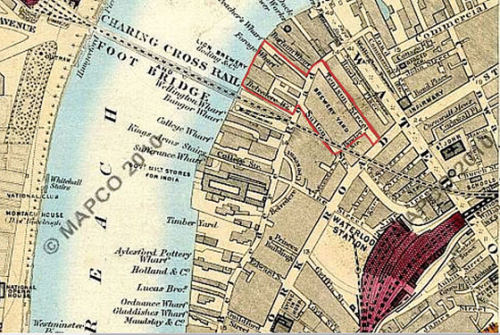
Tenison Street, pictured below, was mean, soot-blackened and crowded. Named for Archbishop Thomas Tenison (1695-1715), its only connection with earlier, perhaps happier times.
Image
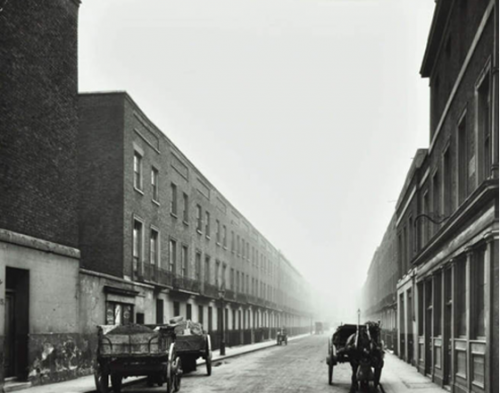
One of William Minor’s routes from Tenison Street to easy access to women was frequenting music halls. There were many in the area, but the borough’s grandest by far was “The Canterbury” at 143 Westminster Bridge Road, aptly name given the district’s major landowner.
In Defining Dr. Minor, “The Canterbury” music hall is where “The Bell Tavern” song is heard on the same night by George & Eliza, having a cheap night out -- and Dr Minor, there in search of women. The engraving below shows the imposing façade of “The Canterbury“ in the 1870s behind which was an auditorium with a surrounding balcony on three sides, which could accommodate almost 1,500 people. Today, there is only a vacant site between Carlisle Street and Upper Marsh giving no hint of the grand gin palace of entertainment that once dominated this corner of Lambeth.
Image
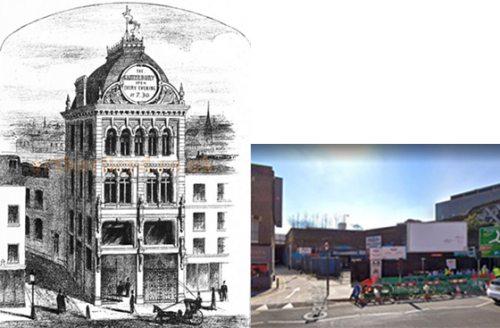
1872 was the year William Minor shot and killed George Merrett in Belvedere Rd by the turning into Tenison Street on 17th February at about 2 in the morning. That frosty early Saturday morning, George was on his way to work on the early shift at the nearby Red Lion Brewery where he stoked the boilers.
The Red Lion Brewery has also vanished from the Lambeth landscape, but in its heyday the 1830s multi story pilastered building on the riverfront was an well-known London landmark – complete with red painted stone lions installed on the pediments of its several entrance gateways.
Image
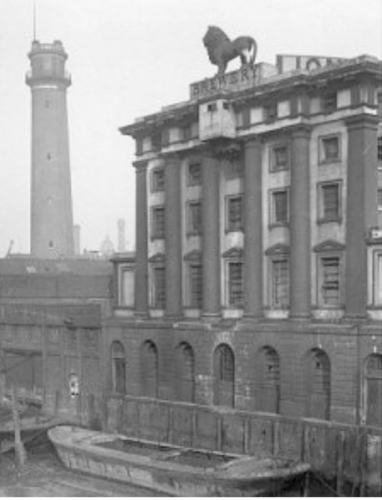
The brewery was an impressive place to work even if you only stoked the boilers. Thirty-four year old George Merrett probably took more than a little pride in doing it – and he’d been doing it for the past eight years. The labour was hot and gruelling and his meagre wages of twenty-four shillings a week were hardly enough to feed, clothe and house his growing family. George and Eliza were both country people, agricultural labourers, from Gloucestershire attracted to London like so many others at the time by the chance of work and a better life. They were still in search of the latter.
Image
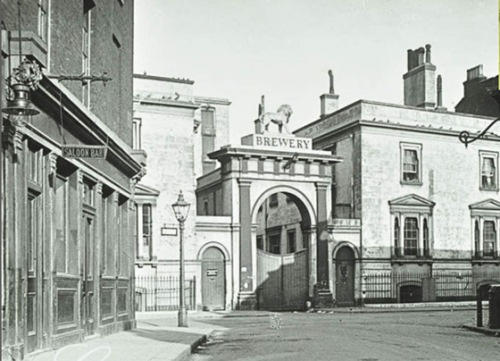
When George left for work at the brewery in the early hours of Saturday on that mid-February morning, he left his pregnant wife Eliza at home in nearby Cornwall Street – named for another local landowner the Duke of Cornwall - with their six children, the eldest almost thirteen and the youngest twelve months. Theirs was a precarious life already. It was about to become much more so. Tenison St and the brewery buildings were cleared in the late 1940s and only the cobblestones and some lamp posts remained to mark its place when this picture was taken.
Image
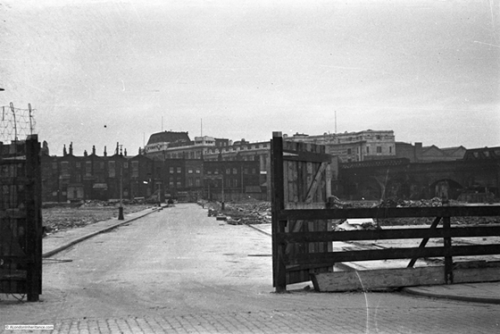
The huge site on the South Bank where they and many other Victorian streets and buildings had stood became the location for the Festival of Britain which opened in 1951
Image
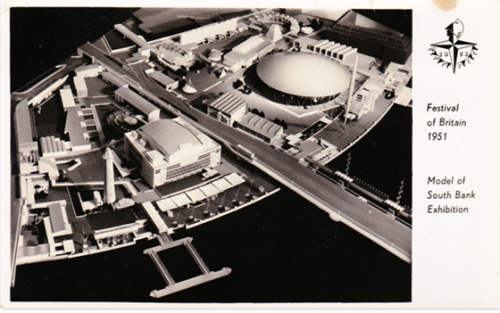
Today the location and any memory of Tenison St are completely erased. On the site of Tenison St now stands the White House Apartments (repurposed from the Shell Centre’s Downstream Building) with units starting above £1m each. It is a world away from the dingy road that Dr Minor knew even though it occupies the same ground.
The irony is that anyone walking along the Thames on the South Bank today may have more of a connection with Tenison St and the Red Lion Brewery than they think, because innumerable wagon loads of debris from the cleared streets and buildings in the riverside area were used to build the Thames embankment on top of which the walkway now runs.
Image
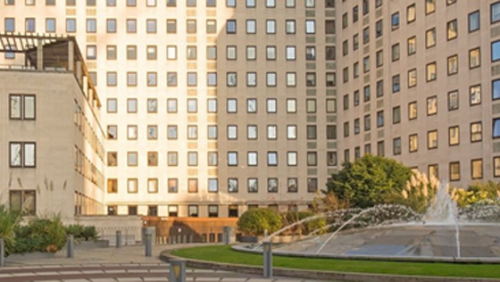
If Tenison Street and the music halls are long gone, what of the three brewery lions? The Red Lion Brewery isn’t quite forgotten because, though no longer painted red, one of its enormous lions regally guards the southern approach to Westminster Bridge. Another, painted gold, stands outside the England rugby ground at Twickenham. But the fate of the third beast remains unknown. Its fragments may well be entombed in the Thames embankment along with those of the Brewery it graced.
The fates of William Chester Minor and George and Eliza Merrett, however, are well documented. The violent collision of these three lives and the unforeseeable, intertwining consequences of what happened in Belvedere Road on that frosty morning in mid-February 1872 are the substance of Mark Bunyan’s dramatic musical theatre creation Defining Dr Minor.
Image
